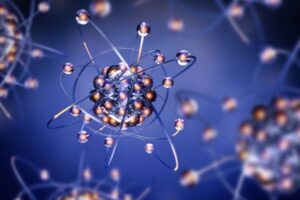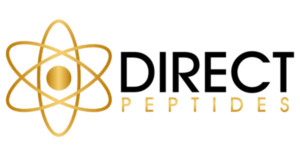
GHK-Cu Capsules: Copper Peptides For Skin
GHK-Cu Capsules: Copper Peptides For Skin In an ever-evolving world of beauty standards, the quest for vibrant, healthy skin remains
Hair growth and maintaining a healthy head of hair are topics that generate a lot of interest and research. People are always looking for new treatments and substances that can help with this. Two peptides, PTD-DBM and GHK-Cu, have been getting a lot of attention lately for their potential in stimulating hair growth. In this blog, we’ll take a closer look at how these peptides, PTD-DBM and GHK-Cu, play a role in promoting hair growth and regeneration.
Hair growth is a natural process that occurs in cycles, comprising four main stages: Anagen (growth phase), Catagen (transition phase), Telogen (resting phase), and Exogen (shedding phase). The Anagen phase, which lasts several years, sees the hair grow from the roots. Next, the Catagen phase involves a short transition period of approximately two weeks, where hair growth ceases, and the hair follicle shrinks. The Telogen phase is a resting period of a few months, where new hair begins to form beneath the existing, detached hair strand. Finally, the Exogen phase involves the shedding of the old hair and the emergence of the new strand.
Several factors can influence hair growth, affecting its rate and quality. Genetic predisposition is a significant influence, determining hair colour, type, and growth rate. Hormonal changes, such as those during pregnancy or menopause, can also impact hair growth.
Nutritional deficiencies, particularly in proteins, vitamins, and iron, can lead to weaker hair and slower growth. Other factors include stress, aging, and underlying health conditions, which can all potentially disrupt the normal hair growth cycle. In the subsequent sections, we will explore how peptides like PTD-DBM and GHK-Cu interact with these natural processes and factors to stimulate hair growth.
PTD-DBM, also known as Protein Transduction Domain–Dvl Binding Motif, is a peptide derived from a specific protein known as Dishevelled (Dvl). This peptide is the result of extensive scientific study in the quest to understand Wnt/β-catenin signaling, a critical pathway involved in various biological processes, including hair growth and development.
Direct Peptides offers premium quality PTD-DBM peptides online at competitive prices.
The Wnt/β-catenin pathway is pivotal in hair follicle formation and cycling. PTD-DBM has a unique ability to activate this pathway, thus stimulating hair growth. It functions by inhibiting the interaction between Dvl and CXXC5. The latter is a negative regulator of the Wnt/β-catenin pathway. When PTD-DBM disrupts the Dvl-CXXC5 interaction, it results in an amplification of the Wnt/β-catenin signal, promoting the transition from the Telogen (resting) phase to the Anagen (growth) phase of the hair cycle.
Several America studies have highlighted the role of PTD-DBM in hair growth. In a study published in the Journal of Investigative Dermatology in 2017, researchers used a mouse model to demonstrate that topical application of PTD-DBM promoted hair regrowth by enhancing the Wnt/β-catenin pathway.
Another research published in the Journal of Biological Chemistry, 2012, revealed that PTD-DBM could promote hair growth in human hair follicle dermal papilla cells, further substantiating its potential in hair growth stimulation. Despite these promising studies, it’s important to note that further America research is needed to fully understand the efficacy and safety of PTD-DBM in humans.
GHK-Cu, or Copper Tripeptide-1, is a naturally occurring copper complex that was first identified in human plasma. Its existence was discovered in 1973 when researchers were examining the role of copper in the body. GHK-Cu stands out as a small peptide that can bind to copper ions, which plays a significant role in various physiological functions, such as wound healing, immune response, and, notably, hair growth.
GHK-Cu is available online from Direct Peptides, a trusted supplier of premium quality research peptides.
The role of GHK-Cu in promoting hair growth stems from its multifaceted biological activities. First, GHK-Cu enhances the production and function of various growth factors that are instrumental in hair follicle development and cycling. These include vascular endothelial growth factor (VEGF) and fibroblast growth factor (FGF), which stimulate blood circulation to the hair follicles, thus promoting their nourishment and growth. GHK-Cu also exhibits anti-inflammatory properties, which could potentially counteract the effects of hair follicle inflammation that commonly accompanies pattern hair loss.
Several pieces of research have demonstrated the effectiveness of GHK-Cu in stimulating hair growth. A study published in the Journal of Peptide Science in 2015 revealed that GHK-Cu could significantly stimulate hair growth by increasing follicle size and proliferation of dermal papilla cells in a mouse model.
Another study conducted in 2018 and published in the International Journal of Molecular Sciences asserted that GHK-Cu could be a promising therapeutic agent for treating hair loss conditions like androgenetic alopecia, commonly known as male or female pattern baldness. Nevertheless, it is important to highlight that further comprehensive studies involving human participants are necessary to validate these discoveries.
The combination of PTD-DBM and GHK-Cu provides a potent approach for hair growth stimulation, capitalising on the unique pathways targeted by each peptide. PTD-DBM elevates hair growth promotion by enhancing the Wnt/β-catenin pathway, while GHK-Cu stimulates hair growth through upregulation of growth factors and its anti-inflammatory properties. Together, these peptides provide a comprehensive approach to hair growth stimulation, targeting distinct, yet complementary, mechanisms of action.
You can save money peptide stack PTD-DBM and GHK-Cu online from Direct Peptides
PTD-DBM and GHK-Cu stimulate hair growth through distinct mechanisms, each addressing a different aspect of the hair growth cycle. PTD-DBM primarily functions by modulating the Wnt/β-catenin pathway. It inhibits the interaction between Dvl and CXXC5, a negative regulator of this pathway, thereby disrupting the Dvl-CXXC5 interaction and enhancing the Wnt/β-catenin signal. This, in turn, promotes the transition from the Telogen to the Anagen phase of the hair cycle, stimulating hair growth.
On the other hand, GHK-Cu operates through a different mechanism. It enhances the production and function of vital growth factors, such as VEGF and FGF, which stimulate blood circulation to the hair follicles, promoting nourishment and growth. Furthermore, GHK-Cu exhibits anti-inflammatory properties, potentially counteracting the effects of hair follicle inflammation often associated with pattern hair loss.
In this way, PTD-DBM and GHK-Cu target distinct and complementary mechanisms, offering a comprehensive approach to hair growth stimulation.
Utilising both PTD-DBM and GHK-Cu simultaneously presents an all-encompassing strategy for stimulating hair growth. America Research suggests each peptide focuses on different, yet synergistically compatible, aspects of hair production and preservation. PTD-DBM targets the Wnt/β-catenin pathway, revitalising the transition from telogen to anagen phase, effectively initiating the growth phase of the hair cycle.
Concurrently, GHK-Cu bolsters the production of crucial growth factors and mitigates inflammation, nourishing the hair follicles and reducing conditions that may hinder growth. This dual approach provides a more robust and comprehensive solution for hair loss, maximising the potential for hair regrowth and maintenance. Further America studies are anticipated to explore the broader applications of this combined peptide therapy in alopecia and other hair loss conditions.
In the scientific community, interest in the synergistic effects of PTD-DBM and GHK-Cu has begun to grow. A noteworthy study published in the Journal of Cosmetic Dermatology in 2018 found that a hair tonic containing both PTD-DBM and GHK-Cu considerably enhanced hair density and thickness in subjects suffering from hair thinning. The study reported that the tonic was well-tolerated and effectively stimulated hair growth over a 16-week trial period.
This research presents promising evidence of the combined effectiveness of PTD-DBM and GHK-Cu in hair growth stimulation. However, more extensive studies are required to substantiate these findings and determine the optimum ratios and application methods for these peptides.
A pivotal study providing evidence for the combined effectiveness of PTD-DBM and GHK-Cu in hair growth stimulation was published in the Journal of Cosmetic Dermatology in 2018. This study centred around a hair tonic that incorporated both PTD-DBM and GHK-Cu, and its effects on subjects experiencing hair thinning. Over a 16-week trial period, the tonic significantly increased hair density and thickness in the subjects.
Furthermore, the application of the tonic was well-tolerated by the users, with no adverse effects reported. These positive findings underscore the potential of using PTD-DBM and GHK-Cu in tandem for hair growth stimulation. However, it’s important to note that further studies are necessary to validate these findings and to both establish the optimal proportions and determine the best application methods for these peptides.
Whilst the initial research offers promising results, it is vital to underscore the necessity for further scientific exploration to validate these findings and optimise the usage of PTD-DBM and GHK-Cu. Future studies should focus on determining the ideal concentrations, frequency of application, and delivery methods for these peptides to ensure maximum effectiveness and safety.
With more extensive and rigorous research, the combined use of PTD-DBM and GHK-Cu could potentially revolutionise the treatment and management of hair loss conditions. However, such advancements can only be achieved with a commitment to continued research and exploration within this field.
In conclusion, the combined usage of PTD-DBM and GHK-Cu exemplifies a potent strategy for stimulating hair growth. Capitalising on their distinct yet complementary mechanisms of action, these peptides offer a multifaceted approach to hair growth stimulation. PTD-DBM bolsters hair growth by enhancing the Wnt/β-catenin pathway, while GHK-Cu facilitates hair growth through the upregulation of growth factors and its anti-inflammatory properties.
Notably, a study published in the Journal of Cosmetic Dermatology in 2018 showed promising results for a hair tonic containing both peptides, paving the way for further studies and potential applications. However, as we move forward, it’s essential to continue rigorous research to validate these findings and to optimise the application methods, concentrations, and usage frequency for these peptides.
The potential of PTD-DBM and GHK-Cu in hair growth stimulation is immense. With continued research and exploration, we can potentially unlock a revolutionary solution for hair loss conditions, providing hope to millions struggling with such issues.
[1] https://www.ncbi.nlm.nih.gov/ pmc/articles/PMC4629048/
[2] https://academic.oup.com/burn strauma/article/doi/10.1093/burnst/ tkab047/6513334
[3] https://pubmed.ncbi.nlm.nih.gov/ 36419894/
[4] https://www.sciencedirect.com/ science/article/abs/pii/S09231811 11000521
[5] https://www.researchgate.net/ publication/275582600
[6] https://pubmed.ncbi.nlm.nih.gov/ 22904306/

GHK-Cu Capsules: Copper Peptides For Skin In an ever-evolving world of beauty standards, the quest for vibrant, healthy skin remains

Explore the anti-aging effects of Epithalon And Thymalin Stack The pursuit of longevity and delaying the signs of aging is

What Is NAD+? Discover The Key Molecule in Human Physiology Hidden in cellular metabolism is a modest molecule that greatly

Exploring the Benefits of Vasoactive Intestinal Peptide (VIP) The quest for cutting-edge medical treatments is an ongoing saga, and in

401 N. Mills Ave, Ste B, Orlando, FL 32803, United States
